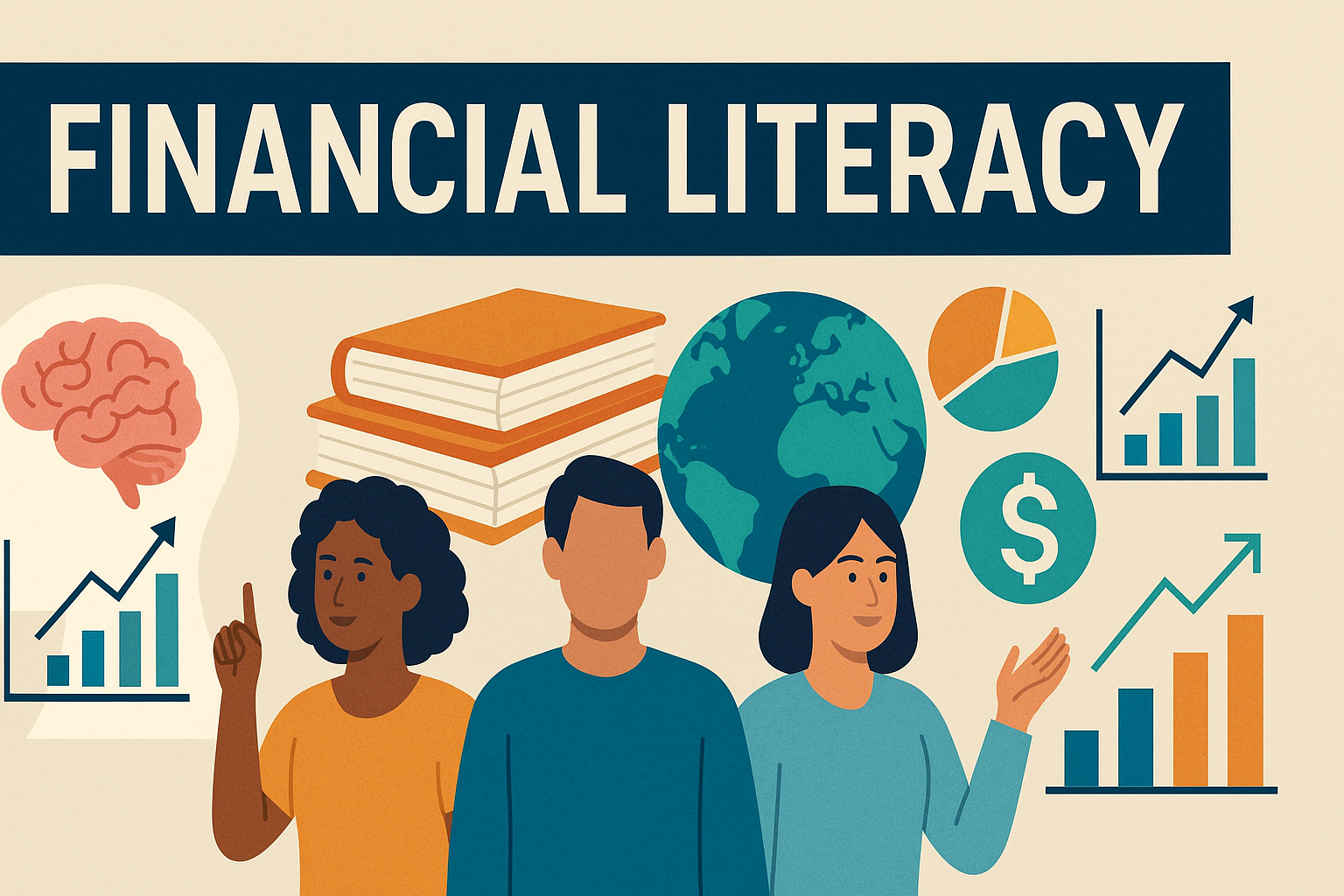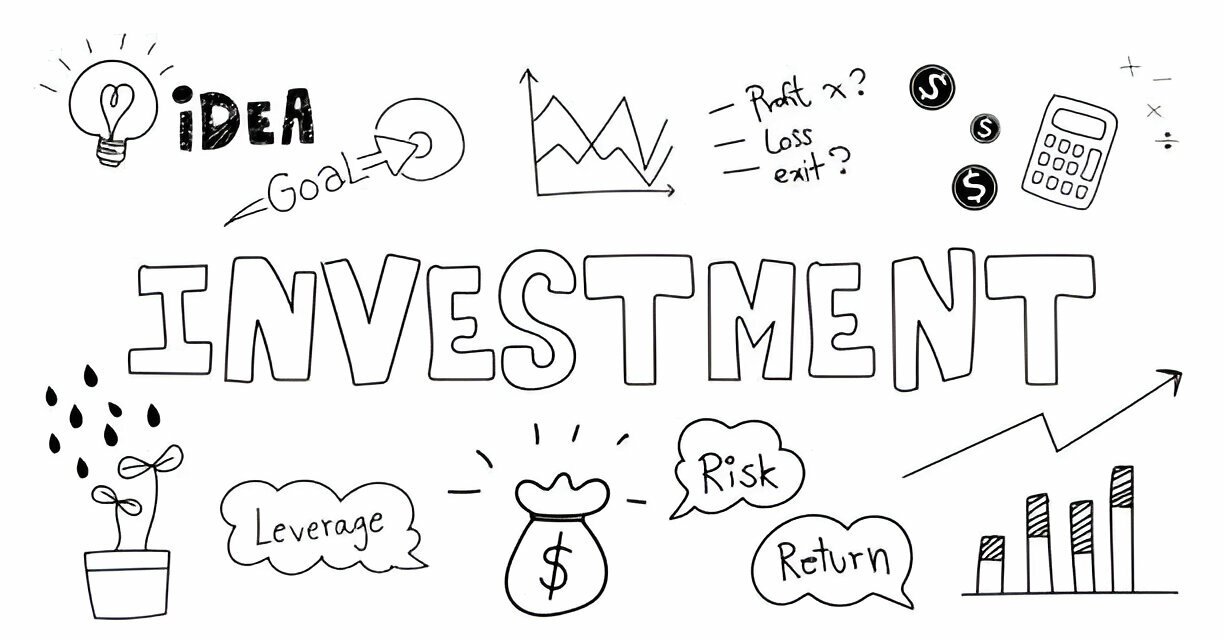Understanding Compound Interest: The Math Behind Wealth Building
Introduction
Albert Einstein allegedly called compound interest “the eighth wonder of the world,” and while this quote’s authenticity remains debated, the sentiment rings true for anyone serious about building wealth. Compound interest represents the mathematical foundation upon which most successful long-term investment strategies are built, yet many people struggle to grasp its true power.
The difference between those who achieve financial independence and those who don’t often comes down to understanding and leveraging compound interest effectively. This isn’t just about knowing the formula – it’s about understanding how time, consistency, and smart financial decisions can transform modest savings into substantial wealth. More From Mobelwealth: 7 surprising money rules most People Don’t Know About
What Is Compound Interest?
Compound interest occurs when you earn interest not only on your original investment (the principal) but also on the interest that has already been earned. Unlike simple interest, which only calculates returns on the initial amount, compound interest creates a snowball effect where your money grows exponentially over time.
Simple Interest vs. Compound Interest
To understand the difference, consider this example:
Simple Interest: You invest $1,000 at 5% annual interest. Each year, you earn $50 (5% of $1,000), regardless of how long you leave the money invested.
Compound Interest: You invest $1,000 at 5% annual interest, compounded annually. In the first year, you earn $50. In the second year, you earn 5% of $1,050 ($52.50), and so on. The interest earns interest. More From Mobelwealth: Emergency Fund vs. Investing: How to Balance Both Financial Goals
The Mathematical Foundation
The Compound Interest Formula
The basic compound interest formula is:
A = P(1 + r/n)^(nt)
Where:
- A = Final amount
- P = Principal (initial investment)
- r = Annual interest rate (as a decimal)
- n = Number of times interest is compounded per year
- t = Time in years
Breaking Down the Components
Principal (P): This is your starting amount. While a larger principal accelerates wealth building, the power of compound interest means that even modest amounts can grow significantly over time.
Interest Rate (r): According to historical data from the Federal Reserve Bank of St. Louis, the S&P 500 has averaged approximately 10% annual returns over the past 90 years, though this includes significant volatility. A more conservative estimate of 7-8% accounts for inflation and provides a realistic expectation for long-term stock market investing.
Compounding Frequency (n): This determines how often interest is calculated and added to the principal. Daily compounding (n=365) will yield slightly better results than annual compounding (n=1), but the difference becomes less significant with longer time periods.
Time (t): This is the most critical variable. The exponential nature of compound interest means that extending your investment timeline by even a few years can dramatically impact your final wealth.
The Power of Time: Real-World Examples
The Early Bird Advantage
Consider two investors:
Sarah starts investing at age 25:
- Invests $200 monthly for 10 years (ages 25-35)
- Total invested: $24,000
- Then stops contributing but leaves money invested until age 65
- Assuming 7% annual return, her account grows to approximately $602,000
Mike starts investing at age 35:
- Invests $200 monthly for 30 years (ages 35-65)
- Total invested: $72,000
- Assuming 7% annual return, his account grows to approximately $566,000
Despite investing three times more money, Mike ends up with less than Sarah because she started 10 years earlier. This demonstrates the critical importance of starting early.
The Millionaire Math
To accumulate $1 million through monthly investments at a 7% annual return:
- Starting at age 25: Requires $381 monthly for 40 years
- Starting at age 35: Requires $820 monthly for 30 years
- Starting at age 45: Requires $1,900 monthly for 20 years
The required monthly investment nearly quintuples when you delay starting by 20 years, according to compound interest calculations. You can verify these calculations using Investor.gov’s compound interest calculator.
Frequency Matters: Daily vs. Annual Compounding
While the difference isn’t dramatic, compounding frequency does impact returns. A $10,000 investment at 5% interest over 20 years yields:
- Annual compounding: $26,533
- Monthly compounding: $27,126
- Daily compounding: $27,181
The difference between annual and daily compounding is $648 over 20 years – meaningful but not revolutionary. Focus more on starting early and contributing consistently rather than obsessing over compounding frequency.
Common Misconceptions About Compound Interest
“It’s Too Good to Be True”
Many people dismiss compound interest projections as unrealistic. However, historical market data supports these calculations. According to Morningstar’s research, the S&P 500’s average annual return of approximately 10% over the past century, including the Great Depression, multiple recessions, and various market crashes, validates long-term compound interest assumptions.
“I Need a Large Sum to Start”
This misconception prevents many from beginning their investment journey. The reality is that consistent small contributions often outperform sporadic large investments due to dollar-cost averaging and the time value of money.
“High Returns Are Always Better”
While higher returns accelerate wealth building, they typically come with increased risk. A consistent 7% return often produces better long-term results than volatile investments that average 10% but experience significant downturns.
Practical Applications for Wealth Building
Retirement Planning
The most common application of compound interest is retirement planning. According to the Employee Benefit Research Institute’s 2024 Retirement Confidence Survey, the median retirement account balance for Americans aged 55-64 is only $120,000 – insufficient for most retirement goals.
By starting retirement contributions early and maximizing employer matching, workers can harness compound interest effectively. A 25-year-old contributing $500 monthly to a 401(k) with a 7% return will have approximately $1.37 million by age 65.
Emergency Fund Growth
While emergency funds should prioritize liquidity over returns, high-yield savings accounts can provide modest compound growth. According to Bankrate’s weekly rate survey, current rates around 4-5% APY at online banks mean a $10,000 emergency fund can grow to over $12,000 in five years through compound interest alone.
Debt Elimination Strategy
Compound interest works against you with debt. According to Federal Reserve data, credit card debt averaging 18% annual interest compounds monthly, making minimum payments a wealth-destroying strategy. Understanding this mathematical reality motivates aggressive debt repayment strategies.
Investment Vehicles That Maximize Compound Interest
Index Funds
Low-cost index funds provide broad market exposure with minimal fees, allowing more money to benefit from compound growth. The Vanguard S&P 500 ETF (VOO) charges just 0.03% annually, meaning fees won’t significantly erode compound returns.
Dividend Reinvestment Plans (DRIPs)
These programs automatically reinvest dividends to purchase additional shares, creating a compounding effect. Companies like Coca-Cola and Johnson & Johnson have offered DRIPs for decades, allowing investors to compound their holdings without additional fees.
Tax-Advantaged Accounts
401(k)s, IRAs, and HSAs provide tax benefits that enhance compound growth. According to IRS Publication 590-A, traditional accounts defer taxes, allowing the full investment amount to compound, while Roth accounts provide tax-free growth.
The Psychology of Compound Interest
Why People Struggle with Long-Term Thinking
Behavioral economists have identified several cognitive biases that make compound interest difficult to appreciate:
Present Bias: We overvalue immediate rewards versus future benefits. A $100 immediate bonus feels more valuable than $1,000 in 20 years, even though the latter has greater purchasing power.
Exponential Growth Bias: Research from MIT Sloan shows humans naturally think linearly, making it difficult to visualize exponential growth. Most people underestimate how quickly compound interest accelerates in later years.
Procrastination: The benefits of compound interest are invisible initially, leading to procrastination. Unlike diet or exercise, where results appear relatively quickly, investment results take years to become obvious.
Overcoming Psychological Barriers
Automate Investments: Set up automatic transfers to investment accounts to remove the temptation to delay or skip contributions.
Visualize Future Wealth: Use compound interest calculators like NerdWallet’s compound interest calculator to see projected account balances. Making future wealth tangible helps overcome present bias.
Start Small: Begin with amounts that don’t strain your budget. Success builds confidence and makes it easier to increase contributions over time.
Inflation and Compound Interest
The Hidden Erosion of Purchasing Power
Inflation historically averages 2-3% annually, according to Bureau of Labor Statistics data. This means that money earning less than inflation rates actually loses purchasing power over time, even with compound interest.
Real vs. Nominal Returns
Financial planning should focus on real returns (after inflation) rather than nominal returns. A 7% investment return with 3% inflation provides a 4% real return. This distinction becomes crucial for long-term wealth preservation.
Advanced Compound Interest Strategies
Tax-Loss Harvesting
This strategy involves selling investments at a loss to offset capital gains, reducing tax liability and allowing more money to compound. According to research from Morningstar, while complex, tax-loss harvesting can add 0.5-1% to annual returns over time.
Asset Location
Placing tax-inefficient investments in tax-advantaged accounts and tax-efficient investments in taxable accounts maximizes compound growth. The Bogleheads community provides comprehensive guidance on asset location strategies.
Dollar-Cost Averaging
Regular investment contributions regardless of market conditions smooth out volatility and can enhance compound returns. Research from Charles Schwab shows this strategy removes the impossible task of timing the market while ensuring consistent participation in compound growth.
Technology and Compound Interest
Robo-Advisors
Automated investment platforms like Betterment and Wealthfront make compound interest accessible to novice investors. These platforms handle rebalancing, tax optimization, and dollar-cost averaging automatically.
Micro-Investing Apps
Apps like Acorns and Stash allow users to invest spare change, making it easier to start building compound wealth. While fees can be high relative to small balances, these platforms remove barriers to beginning investment.
Case Studies in Compound Interest Success
The Janitor Who Became a Millionaire
Ronald Read, a Vermont janitor and gas station attendant, accumulated $8 million through disciplined investing in dividend-paying stocks over several decades. His story, documented by CNBC, demonstrates how compound interest works through buying quality companies and reinvesting dividends.
Warren Buffett’s Compound Journey
Warren Buffett’s wealth demonstrates compound interest on a massive scale. According to Berkshire Hathaway’s annual reports, starting with $10,000 in 1956, his investment partnership and later Berkshire Hathaway have compounded wealth at approximately 20% annually for over 60 years.
Common Mistakes That Derail Compound Interest
Trying to Time the Market
Market timing attempts destroy compound returns through missed opportunities and transaction costs. Studies from JP Morgan Asset Management show that missing just the 10 best trading days over 20 years can cut returns by 50%.
High Fees and Expenses
Investment fees compound negatively, reducing wealth accumulation. According to SEC investor guidance, a 2% annual fee might seem small, but it can reduce a portfolio’s value by 30% over 30 years compared to a 0.5% fee structure.
Emotional Investing
Panic selling during market downturns and euphoric buying during peaks disrupts compound growth. Research from DALBAR consistently shows that emotional investing significantly reduces investor returns compared to market averages.
The Role of Compound Interest in Financial Independence
The 4% Rule
This retirement planning guideline, developed by financial planner William Bengen and documented in research from Trinity University, suggests that retirees can withdraw 4% of their portfolio annually without depleting principal. This rule assumes that compound interest will continue generating wealth even during retirement.
FIRE Movement
Financial Independence, Retire Early adherents use aggressive saving rates and compound interest to achieve financial freedom decades earlier than traditional retirement ages. Resources like Mr. Money Mustache and FIRE community forums show how FIRE practitioners harness compound interest by saving 50% or more of income and investing in low-cost index funds.
Conclusion
Compound interest represents one of the most reliable paths to long-term wealth building, but it requires patience, discipline, and early action. The mathematical principles are straightforward, but the psychological challenges are significant. Success comes from starting early, investing consistently, minimizing fees, and maintaining perspective during market volatility.
The examples and calculations presented here aren’t theoretical – they’re based on historical market performance and mathematical certainty. Every day you delay beginning or increasing your investments is a day when compound interest can’t work in your favor.
Remember that compound interest is a marathon, not a sprint. Small, consistent actions compound over time to create extraordinary results. The key is to start now, no matter how small the amount, and let mathematics and time work in your favor.
Your future self will thank you for understanding and applying the principles of compound interest today. The eighth wonder of the world is waiting to work for you – you just need to give it the opportunity.
Frequently Asked Questions (FAQ)
Q: How much money do I need to start benefiting from compound interest? A: You can start with any amount. Even $25 monthly invested at 7% annual return will grow to over $65,000 in 30 years. The key is starting early and being consistent, not the initial amount.
Q: Is compound interest guaranteed? A: Compound interest is a mathematical certainty, but investment returns are not guaranteed. Historical market averages support long-term compound growth expectations, but individual results may vary due to market volatility.
Q: How often should compound interest be calculated for maximum benefit? A: While daily compounding provides slightly better results than annual compounding, the difference is minimal over long periods. Focus more on starting early and contributing consistently rather than optimizing compounding frequency.
Q: Can compound interest help me become a millionaire? A: Yes, compound interest can help most people become millionaires through consistent investing. Starting at age 25 and investing $381 monthly at 7% annual return will result in approximately $1 million by age 65.
Q: How does inflation affect compound interest? A: Inflation reduces the purchasing power of money over time. To maintain wealth, your compound interest rate should exceed inflation by a meaningful margin. Historically, stock market returns have significantly outpaced inflation over long periods.
Q: What’s the best investment vehicle for compound interest? A: Low-cost index funds are generally considered optimal for most investors because they provide broad market exposure with minimal fees, allowing more money to benefit from compound growth.
Q: Can I use compound interest to pay off debt faster? A: While compound interest doesn’t directly pay off debt, understanding how compound interest works against you with debt (especially credit cards) can motivate aggressive repayment strategies. High-interest debt compounds against you monthly.
Q: How do taxes affect compound interest? A: Taxes can significantly impact compound growth. Tax-advantaged accounts like 401(k)s and IRAs protect investments from annual taxes, allowing more money to compound. Roth accounts provide tax-free growth.
Q: Is it too late to start if I’m already 40 or 50? A: It’s never too late to start. While starting earlier provides more dramatic results, compound interest still works powerfully over 15-25 year periods. A 40-year-old investing $500 monthly at 7% return will have approximately $367,000 by age 65.
Q: How do I calculate compound interest for my specific situation? A: Use the formula A = P(1 + r/n)^(nt) or online compound interest calculators like Calculator.net’s compound interest calculator. Many investment brokers and financial websites provide free calculators that show projections based on your specific circumstances.















Loading comments...
Leave a Comment(Login required)